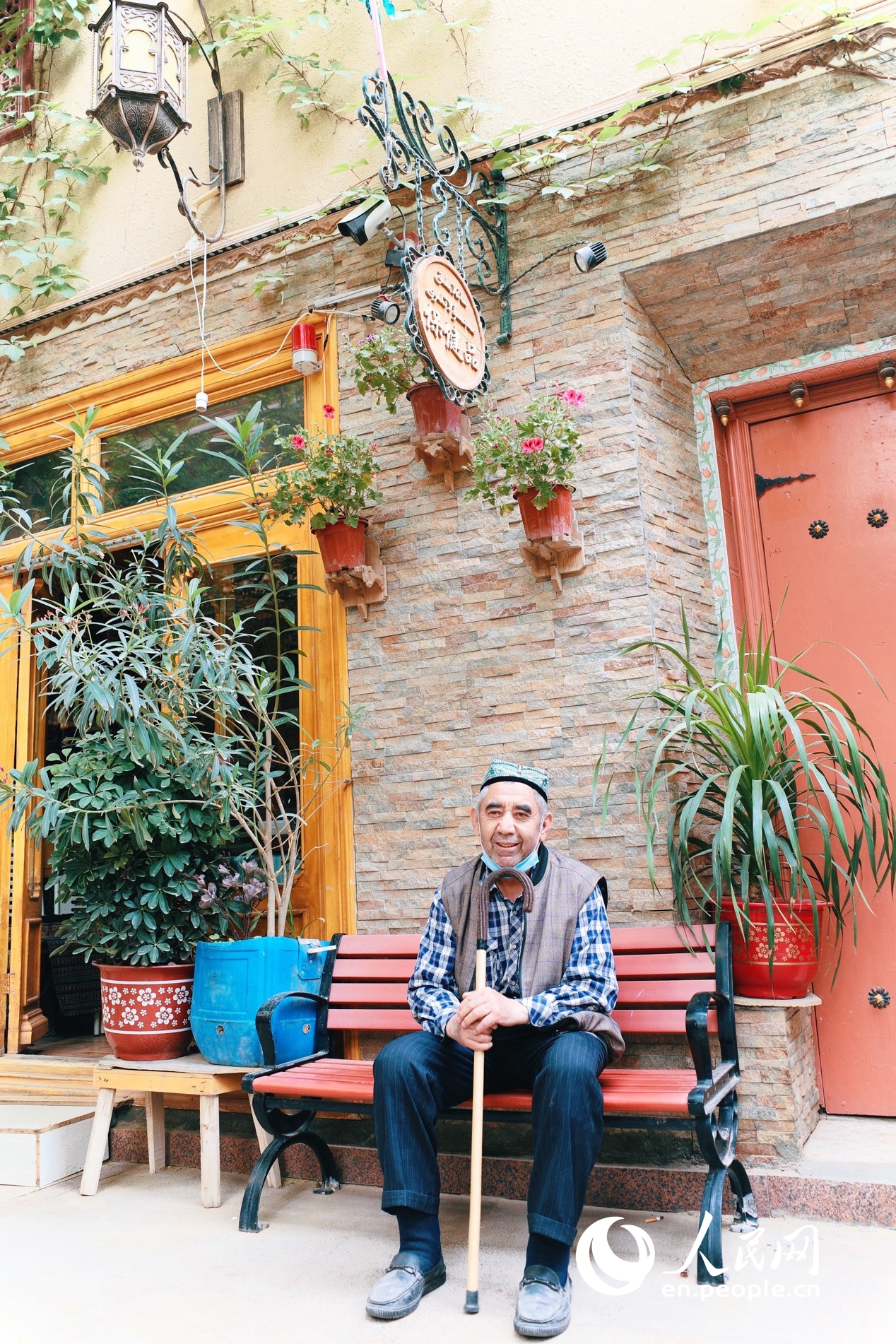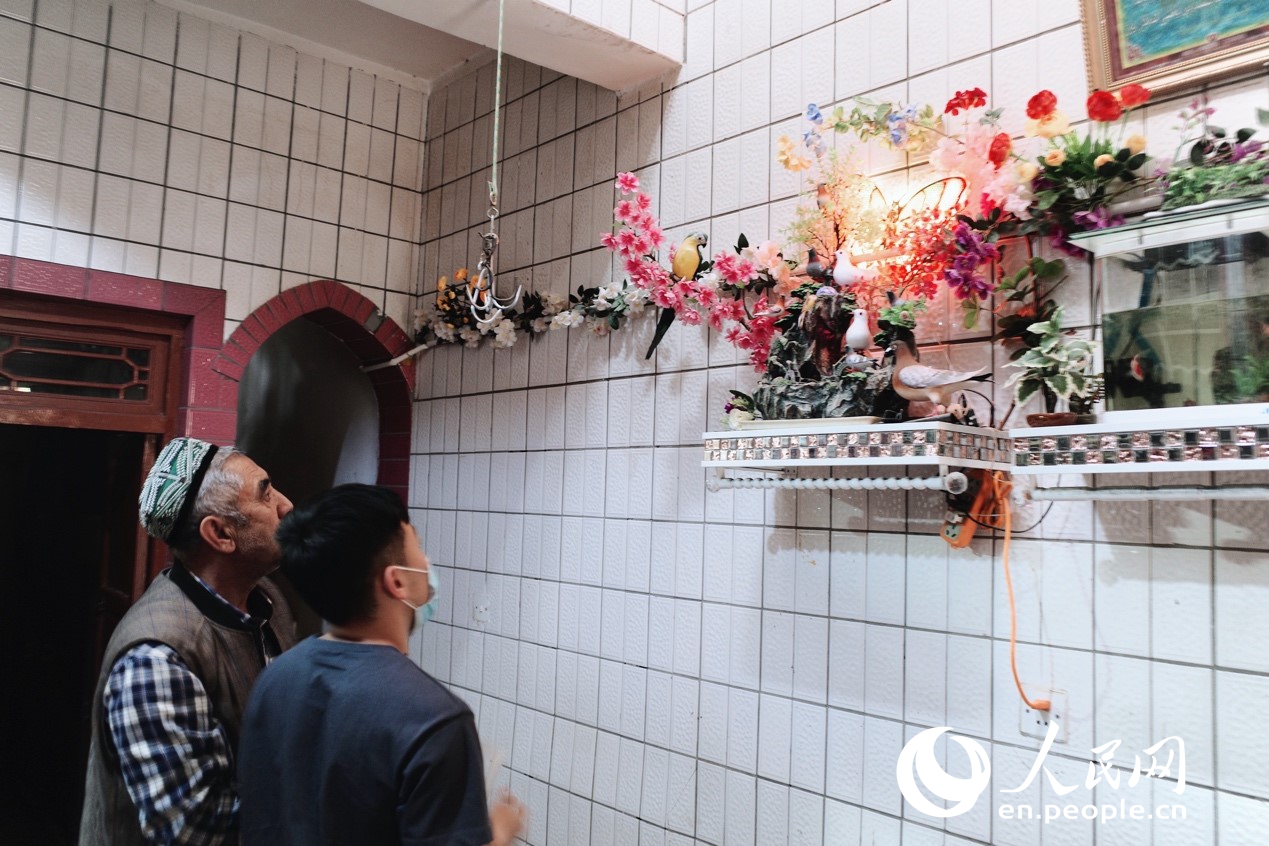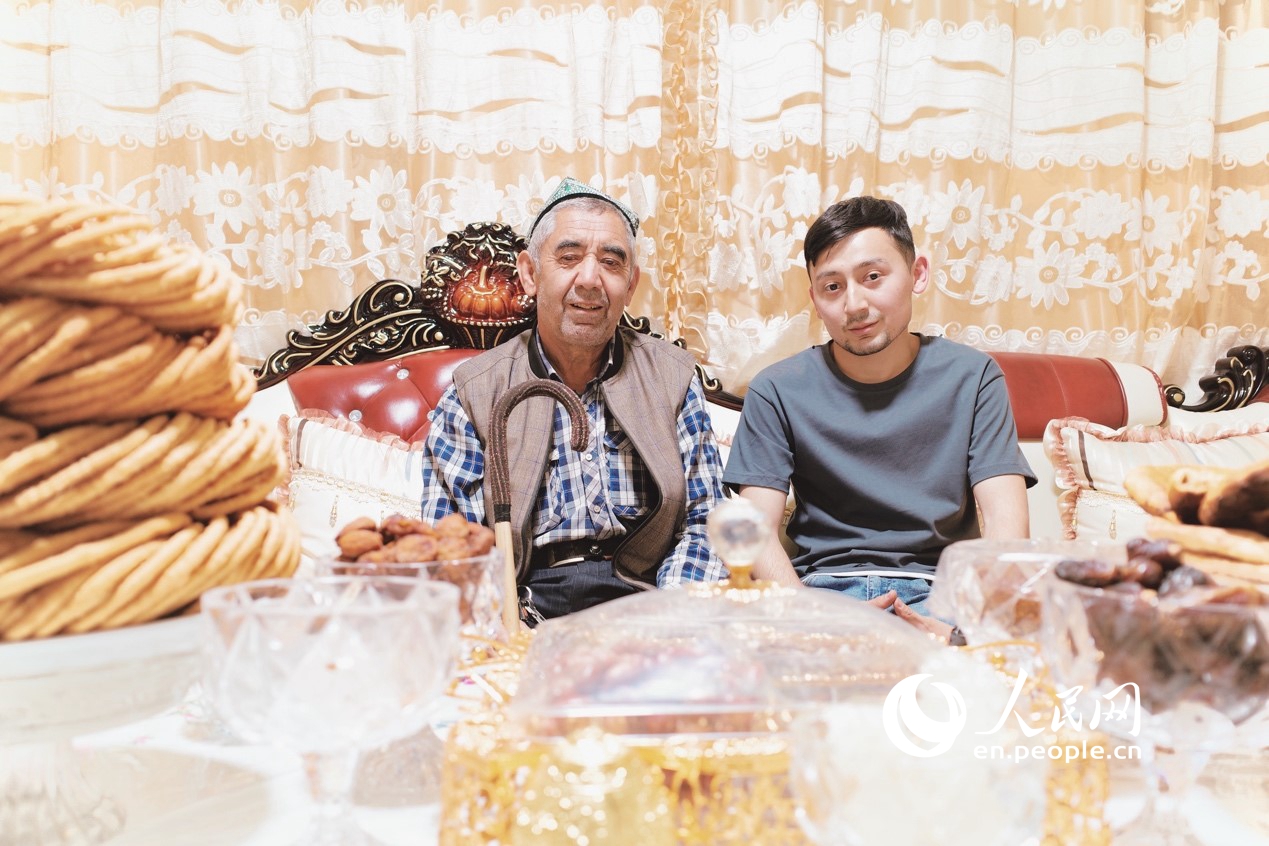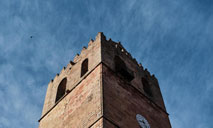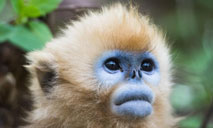Tales of Hotan: Tradition, religion and innovation (2)
Tradition: stories of an ancient Uygur neighbourhood
Memtimin Ghopur and his ancestral house in Hotan, northwest China's Xinjiang Uygur Autonomous Region. (People's Daily Online/Kou Jie)
Sipping herbal tea on the porch outside his 200-year-old ancestral house, 68-year-old Memtimin Ghopur has seen it all. Born into a medical family, the knowledge of treating patients with traditional Uygur medicine has been passed down through eight generations in his family, while on the first floor of his ancestral house, all kinds of Uygur medicines are still displayed on counters.
Memtimin lives in Tuancheng, a once run-down residential community, which is now the most renowned pedestrian street in Hotan. His shabby one-floor residence was renovated by the government in 2016, and turned into a three-floor Uygur-style mansion. He and his wife, along with three children, live on the second and third floors of their new home, while the first floor now serves as a small clinic where he receives patients and sells traditional Uygur medicine.
Doves are the symbol of Hotan. Dove decorations can be found everywhere in Memtimin's house. (People's Daily Online/Kou Jie)
"I'm proud of my new home. Each house in Tuancheng has its unique beauty, because it is designed by the family who lives in it. Mine has a small windmill on the roof, as well as beautiful dove decorations, because I really like doves," said Memtimin.
According to Memtimin, the renovation of history-rich Tuancheng has injected vitality into the once untraversed Uygur neighbourhood. His ancestral house has now become a famous attraction on the pedestrian street, attracting countless visitors and patients. He has developed a new hobby – making friends with the visitors, especially those who can bring stories and news of the outside world to him.
Memtimin's son is the family's eighth generation of traditional Uygur medicine practitioners. (People's Daily Online/Kou Jie)
As a practitioner of traditional Uygur medicine for his whole life, Memtimin admitted that more and more patients now turn to modern medicine and advanced technologies, but he believes that traditional treatment still has its significance, as it is a carrier of Uygur culture, as well as his family's history.
"As long as there are patients who need my help, I will help them with all my efforts. My son has now become a Uygur medical professional, and he will continue to promote our traditional treatment," said Memtimin.
Tunsahan Abdugheni loves her beautiful Etles silk, which is traditionally used for Uygur people's daily clothes. (People's Daily Online/Kou Jie)
Several blocks away from Memtimin's ancestral house, 42-year-old Tunsahan Abdugheni is busy haggling with her clients in her shop. Colourful and smooth, Etles silk is a type of ikat that Uygur people use traditionally for their clothes and is a speciality of Hotan.
Tunsahan and her family, altogether 13 people, live on the second and third floors of their new house. (People's Daily Online/Kou Jie)
Punctilious and humble, Tunsahan's face displays a sharp blend of the mildness of an ordinary Uygur housewife and the sophistication of a persistent businesswoman forged by decades of commercial endeavour.
"I love beautiful things, and I love to see happy clients in our silk clothes. It is nice to see that our tradition is welcomed by so many people, not only the Uygurs," said Tunsahan.
Like Memtimin, Tunsahan is a life-long resident of Tuancheng. In 2018, Tunsahan, her mother and three brothers, as well as their families moved into their renovated home, making up a total of 13 people. Tunsahan opened her own Etles silk shop on the first floor, making a monthly income of over 4,000 yuan.
"Though my income is not that promising, I still feel happy and have confidence in my future. Going upstairs, I enjoy a happy family life, going downstairs, my career waits for me in my shop. What life can be better than this?" said Tunsahan.
Tunsahan stands outside her new residence in Hotan, northwest China's Xinjiang Uygur Autonomous Region. (People's Daily Online/Kou Jie)
Tunsahan noted that tradition and Uygur culture are well-preserved in their neighbourhood and daily life. Even now, she and her neighbours still keep the old tradition of inviting each other over for dinner to enjoy some delicious food and fun gossip.
"Residents of Tuancheng and Uygur tradition are like threads on my silk embroidery. They are so interwoven it is now impossible to separate them," said Tunsahan.
 |  |
Photos
Copyright © 2021 People's Daily Online. All Rights Reserved.







